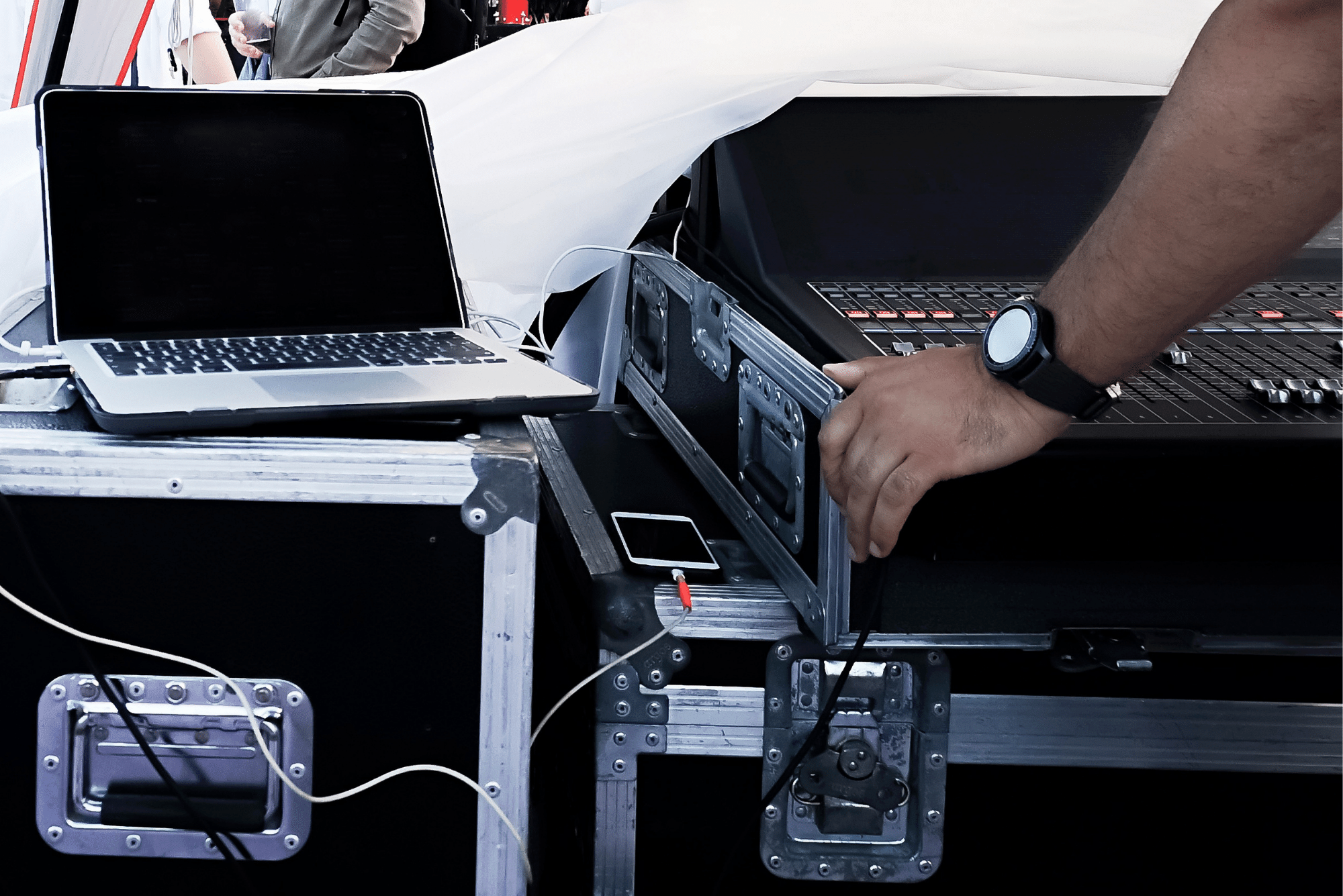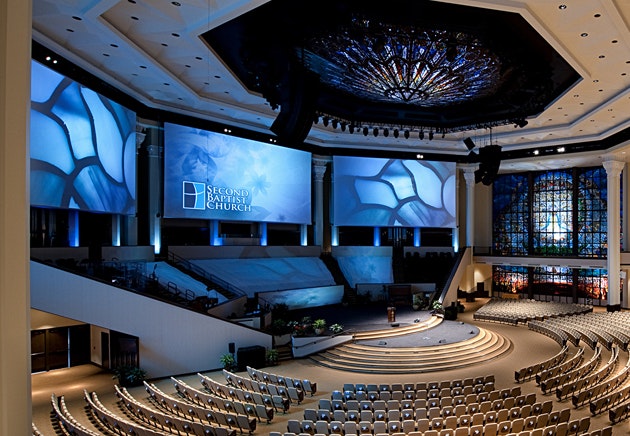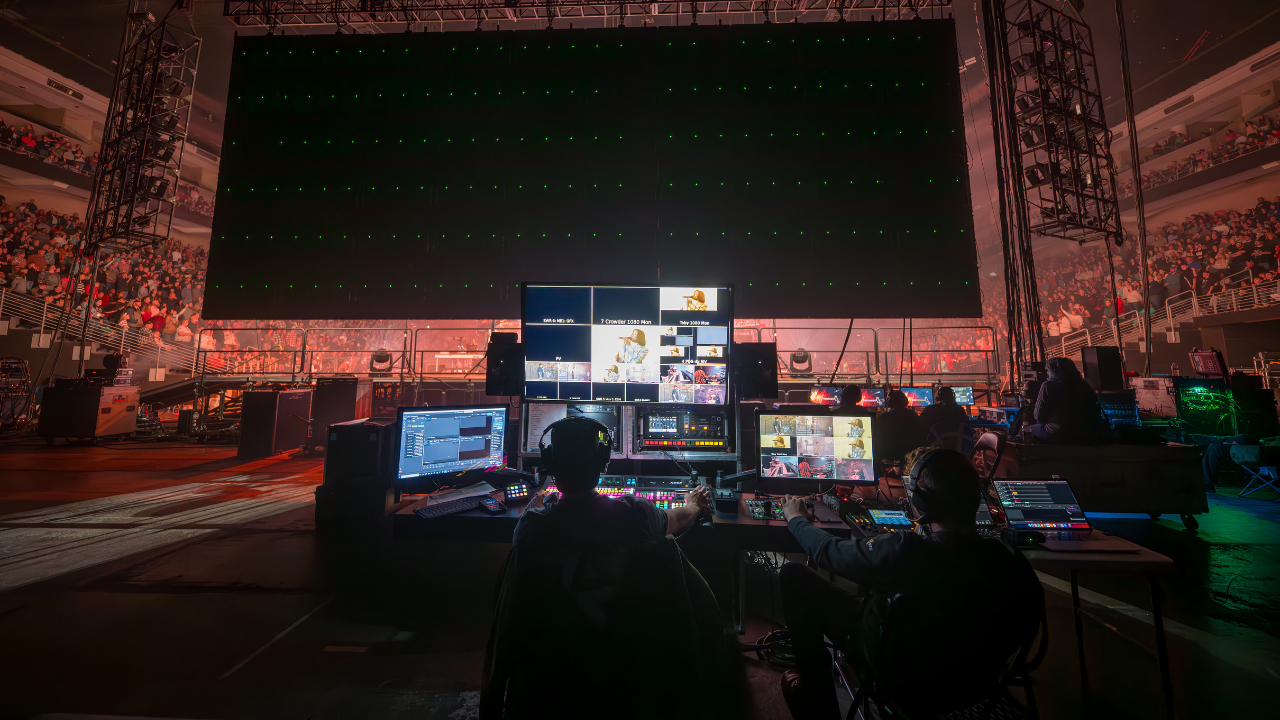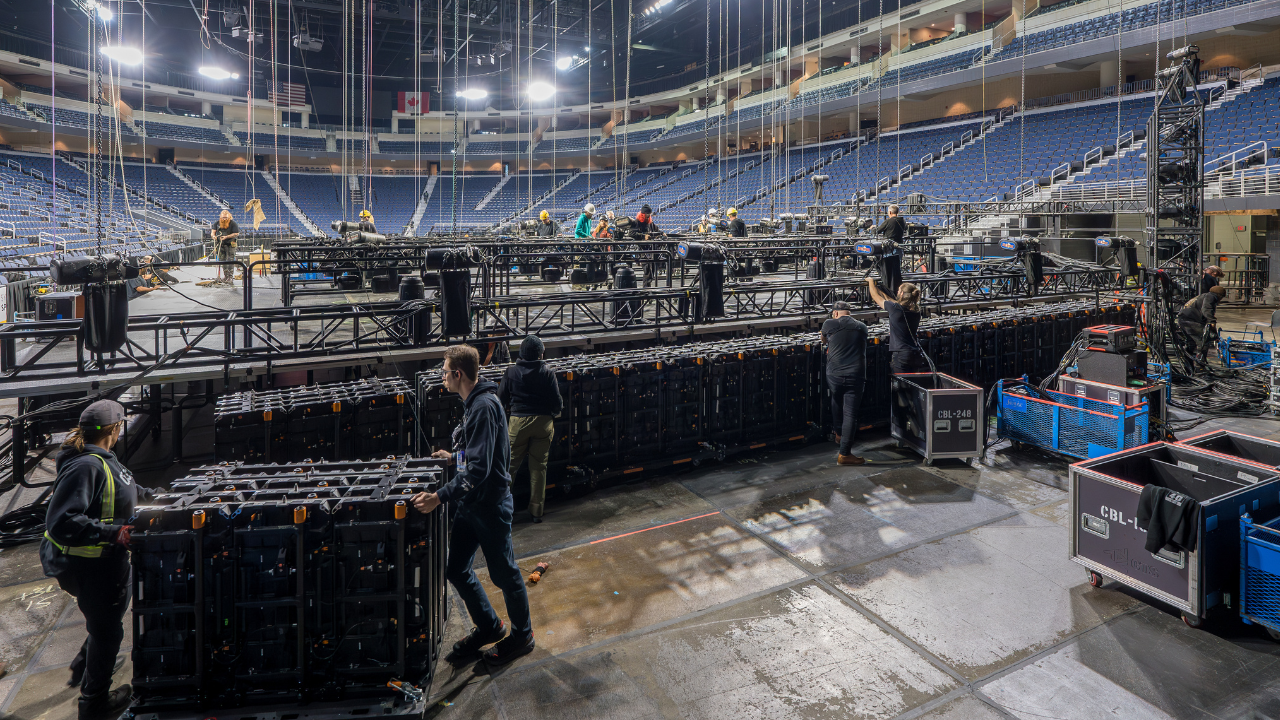4 Signs You’ve Outgrown
Your Church’s Video Systems
Published on: Tuesday, January 25, 2022 - 7:00am

As much as we love gear, we also see it for what it is. Ultimately, audio, video, and lighting equipment are tools.
In churches, they’re the tools we use to communicate a message and create immersive, engaging worship experiences. Regardless of the specific worship style, the right gear should foster creativity and allow for maximum flexibility to create these experiences.
Video systems in particular play a crucial role in church services, special events, and worship gatherings. From presentation systems with projectors, screens, and LED walls to broadcast systems with in-person and streaming capabilities, video systems today are more integral than ever before.
And just like the vital tools used for any other job, when there’s a problem or limitation with an important piece of video equipment, it affects your ability to create and deliver those experiences to your live and virtual congregation.
Here’s the catch: identifying those problems and limitations isn’t as black-and-white as it may seem. Your existing video system may still function as originally intended, and it’s rare for an entire video system to stop working altogether. The signs that show it’s time to reassess the tools at your disposal are often more subtle.
The bottom line is, when your current video system begins to limit your staff’s creativity, flexibility, and ability to execute on the church’s vision, you’ve likely outgrown it.
Below are four signs to watch out for.
1. Limited Stage and Set Design Options
For churches today, the need to change stage and set designs is greater than ever before.
Many churches embrace the opportunity to make design changes for each sermon series. It’s not uncommon for these churches to completely rearrange their stage setup eight or more times a year.
But even the most traditional churches, who maintain a similar look and feel year-round, still make changes for seasonal events like Christmas and Easter services, as well as the occasional worship concert or special series.
Regardless of how frequently you change your stage or set design, three major aspects of your video system should be flexible enough to meet that need as it arises.

Projectors and Screens
Projectors and screens are incredibly useful for displaying song lyrics, sermon notes, and video. But depending on their placement and setup, they can severely limit your set design and lighting options.
Front-projection systems, while cheaper in cost, are largely immobile, need a clear line of sight, and have specific lighting requirements. So if you want to make changes to stage lighting or switch up the choir and orchestra placement, projectors can limit your flexibility.
If you begin finding that your projector system frequently restricts the church’s creativity, you might want to consider upgrading to a more flexible system.

LED Walls
LED walls have also become more prevalent in church environments over the last several years. On stages, not only do they provide the same function as projector systems, but they also serve as engaging backdrops for set design.
While this is still a relatively new technology for churches, LED walls have progressed significantly since they were first introduced. Now, they can be split up into multiple panels, moved around the stage, and rearranged in a variety of ways.
Churches with older LED walls sometimes find that those original systems are too rigid to be changed often or easily. If that’s the case and you find that the placement and arrangement of your existing LED walls frequently limits your set design options, you might consider moving to a newer iteration of the same technology.

Cameras
Video cameras also serve a critical role in a church’s video system.
Capturing and broadcasting live video, or presenting video content on screens in the sanctuary or worship center, allows all members of the congregation to clearly see the speaker and worship leaders as well as engage a virtual / online viewership. With multiple cameras in the room, you’re able to capture a variety of shots that keep the congregation engaged.
These cameras are typically placed in fixed locations around the room to capture specific angles and focal points. The problem is, set design changes often mean relocating these focal points or additional key pieces on stage.
If your existing cameras can’t be easily relocated, you’re left with two options. You can either move the cameras anyway (which often means obstructing views for the congregation), or compromise your set design (which limits your creativity and options).
This can either be solved by upgrading your camera mobility or by adding additional cameras, but in either case, it’s likely you’ve outgrown your current camera system.
2. Unengaging Overflow or Streaming Experience
Some problems are better than others, and in churches, having more people in attendance than your worship center can hold is a great problem to have. Still, it presents unique challenges and opportunities.
Additionally, although in-person church attendance is still on the rise, the number of people streaming church services hasn’t returned to pre-pandemic levels. Livestreaming of church services is here to stay.
If your video system can’t adapt to provide an engaging worship experience for overflow seating or streaming services, it’s another sign you’ve outgrown it.

Overflow
Overflow seating is particularly important during special services and events where attendance spikes predictably, like Christmas Eve or Good Friday.
Even if the overflow room itself is wonderful, outdated video displays can detract from the worshippers’ experience, leaving them feeling uninspired, frustrated, or disconnected.
Contributing factors can include poor quality video displays, projectors without proper lighting, and cameras that aren’t able to capture high-quality images from useful angles.

Streaming
Similarly, cameras play a big role in providing engaging, inspiring worship experiences for those who can’t be there in person.
Many more distractions exist at home, so keeping remote participants engaged is even more of a challenge. If your equipment is unable to capture and broadcast high-quality visuals in a way that draws remote worshippers into the experience, it won’t matter how good the set design is; the impact won’t come through, and remote viewers can become bored or distracted.
If you find that your church struggles to create engaging online content and that technology systems are a part of that limitation, it’s a sign that you might want to consider an upgrade.
3. Constant Need to Rent Additional Equipment
Another sign you’ve outgrown your existing video system is if renting additional equipment becomes the rule rather than the exception.
To be clear, there’s nothing inherently wrong with renting equipment. Sometimes it’s more budget-friendly to rent large pieces that you only need for special occasions. But when renting becomes too frequent, it can present a host of problems.
Unfamiliar equipment can be difficult for your operators to run. Often, camera operators and video controllers are volunteers, not professionally trained, full-time technicians. Rental equipment that functions differently from what they’re used to can increase the risk for mistakes and mishaps during the service.
For cameras specifically, adding temporary locations often results in bunches of cables being gaff-taped to the floor. This may not be a major problem for the infrequent special event, but when it’s a regular occurrence, it can create obstacles (and hazards) for the congregation.
Additionally, since those temporary locations aren’t optimized for a live congregation, they can interfere with and hinder the worship experience.
So if you find you’re renting more than you’d like, it might be time to consider some further investment in your permanent video system.
4. Continual Repairs of Equipment You Own
Finally, the last sign you’ve outgrown your video system is that you’re continually repairing outdated or malfunctioning equipment.
Aside from the increased risk that faulty cameras, projectors, or displays will break during a service, the biggest toll of continual repairs is the opportunity cost. By spending your time diagnosing and repairing equipment during the week, it pulls you away from filling higher-impact roles in the life of your church.
Communicating the message and vision for a service requires an immense amount of creativity and energy. When your attention and time are spent on mending broken systems, you’re likely missing out on better ways to create the best worship experience possible.
It’s Still a Tool
A high-performing video system will certainly increase your ability to create an amazing worship experience, but it won’t do it on its own. Ultimately, it’s still just a tool.
But by staying attuned to your church’s needs and your equipment’s ability to meet those needs, you give your ministry the best chance possible to creatively and effectively reach your congregation and keep the focus on the mission of the church.



